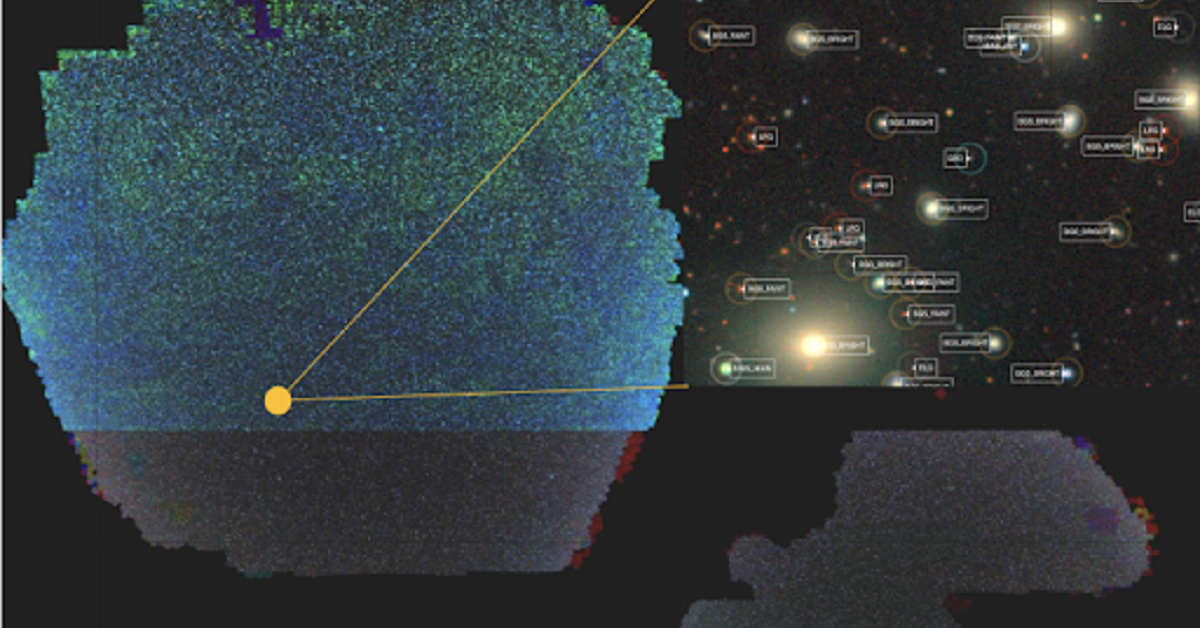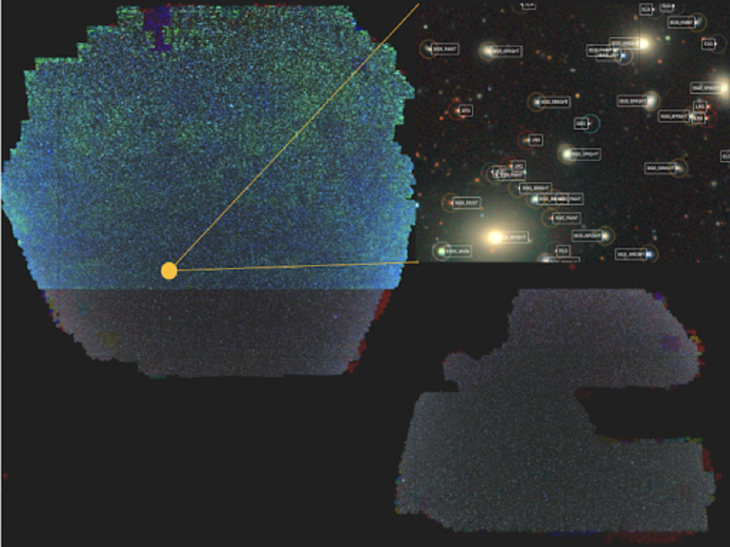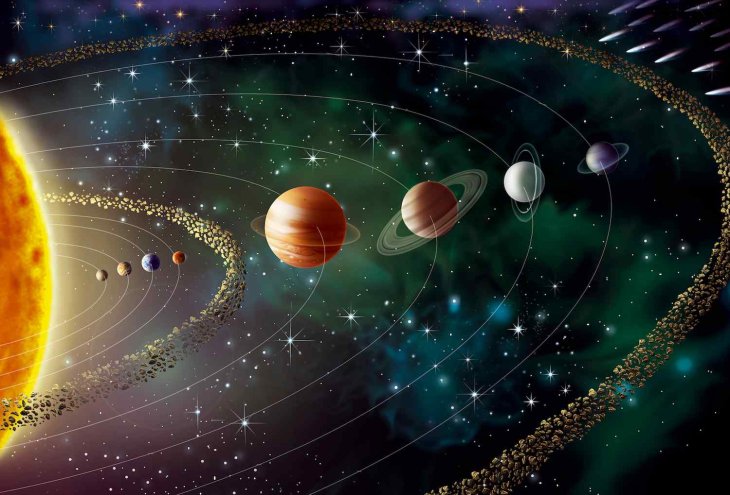China Released A 10,000-Billion-Pixel Map Of The Universe
Dhir Acharya - Jan 19, 2021

About 200 researchers and coordinators observed galaxies in the visible universe over a course of 6 years, resulting in a map with 2 billion asteroids.
- The First Space Hotel In The World Will Welcome 400 Guests
- Startup Builds Vehicle With Soviets Tech To Collect Space Garbage
- World's First Space Hotel To Begin Construction In 2025 With Rooms For 400 Guests
On January 14, China announced a cosmic map built on the data from the project Dark Energy Spectroscopic Instrument (DESI).
Accordingly, about 200 researchers and coordinators of the National Airborne Operations Center (NAOC) of China and DESO observed galaxies in the visible universe over a course of 6 years. This data was then analyzed to match the images together, forming a huge 2D cosmic map with over 10,000 billion pixels, containing about 2 billion asteroids.

The scientists observed for a total of 1405 nights using three different telescopes on land in addition to the annual data amount collected from space telescopes. As a result, they obtained up to 1 PB of data, which is equivalent to 1000 TB.
In the next 5 years, the research group will create a giant 3D map of the universe by measuring the distance between galaxies and the speed at which they away from us. The map is expected to help uncover mysteries about dark energy.
NAOC Vice-director and DESI member, Zhao Gonbo, said that we know the universe is expanding faster. According to existing theories, the expansion of the universe is boosted by dark energy. However, without knowing the nature of dark energy, how can we study it? Gongbo said that they measured the large redshift of galaxies and the 3D distribution of cosmic material.

Recently, a galaxy map was introduced by Japanese astronomers, which shows that the Solar system is only 25,800 lightyears away from the Galactic Center. This distance is much smaller than the 27,700-lightyear distance accepted by the International Astronomical Union (IAU) in 1985.
Nevertheless, this change doesn’t mean the Earth is getting closer to the Supermassive Black Hole Sagittarius A* whose mass is 4 million times that of the Sun, located in the Galactic Center. Instead, the new galaxy map helps us locate the Solar system more accurately in relation to other stars.
According to the latest estimates by Japanese astronomers, the spinning speed of the Solar system around the Galactic Center is also higher than previous estimates. Specifically, the Solar system is moving at 227km/h, 7km faster than the current speed announced by the IAU.
>>> NASA Reveals 20 Most Stunning Earth Images Taken From The ISS
Featured Stories

Features - Jul 01, 2025
What Are The Fastest Passenger Vehicles Ever Created?

Features - Jun 25, 2025
Japan Hydrogen Breakthrough: Scientists Crack the Clean Energy Code with...

ICT News - Jun 25, 2025
AI Intimidation Tactics: CEOs Turn Flawed Technology Into Employee Fear Machine

Review - Jun 25, 2025
Windows 11 Problems: Is Microsoft's "Best" OS Actually Getting Worse?

Features - Jun 22, 2025
Telegram Founder Pavel Durov Plans to Split $14 Billion Fortune Among 106 Children

ICT News - Jun 22, 2025
Neuralink Telepathy Chip Enables Quadriplegic Rob Greiner to Control Games with...

Features - Jun 21, 2025
This Over $100 Bottle Has Nothing But Fresh Air Inside

Features - Jun 18, 2025
Best Mobile VPN Apps for Gaming 2025: Complete Guide

Features - Jun 18, 2025
A Math Formula Tells Us How Long Everything Will Live

Features - Jun 16, 2025
Comments
Sort by Newest | Popular